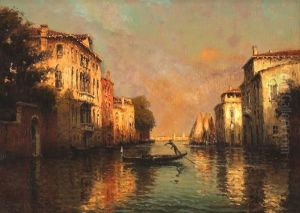Jules Jean Antoine Baric Paintings
Jules Jean Antoine Baric was a French caricaturist and illustrator born in 1830. He became known for his work during the 19th century, which was characterized by a sharp wit and a keen eye for social commentary. Baric's art captured the essence of French society during a time of significant change, including the events leading up to and following the 1848 Revolution, the Second Empire, and the early years of the Third Republic.
Baric's talent in drawing was evident from a young age, and he pursued his passion for art throughout his life. His work often appeared in newspapers and periodicals, which were popular platforms for satire and political cartoons during that era. He contributed to well-known publications such as 'Le Charivari', where Honoré Daumier, another renowned French caricaturist, also published his work. Baric's illustrations and caricatures also graced the pages of 'L'Eclipse' and 'Le Grelot', which were significant outlets for political satire.
Through his art, Baric commented on the social and political issues of his time, using humor and exaggeration to critique the establishment and the absurdities of contemporary life. His illustrations often featured public figures, including politicians and royalty, highlighting their follies and excesses. Despite the humorous nature of his work, Baric's art was not merely for entertainment. It was a form of social protest, reflecting the artist's perspectives on the injustices and challenges of his society.
Jules Jean Antoine Baric's work remains an important part of the history of French caricature. His contributions to the art form have influenced subsequent generations of cartoonists and illustrators. His ability to blend humor with incisive social commentary has cemented his legacy as one of the significant caricaturists of the 19th century. Baric passed away in 1895, leaving behind a body of work that continues to be studied and appreciated for its artistic merit and historical significance.
